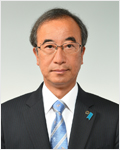


- About Us
-
Member Regional Governments
- China
- Japan
- South Korea (ROK)
- Introduction
- Busan Metropolitan City
- Daegu Metropolitan City
- Incheon Metropolitan City
- Gwangju Metropolitan City
- Daejeon Metropolitan City
- Ulsan Metropolitan City
- Sejong Special Self-Governing City
- Gyeonggi-do Province
- Gangwon State
- Chungcheongbuk-do Province
- Chungcheongnam-do Province
- Jeongbuk State
- Jeollanam-do Province
- Gyeongsangbuk-do Province
- Gyeongsangnam-do Province
- Jeju Special Self-Governing Province
- North Korea (DPRK)
- Mongolia
- Introduction
- Ulaanbaatar City
- Arkhangai Province
- Bayan-Ulgii Province
- Bayankhongor Province
- Bulgan Province
- Govi-Altai Province
- Govisumber Province
- Darkhan-Uul Province
- Dornod Province
- Dornogovi Province
- Dundgovi Province
- Zavkhan Province
- Orkhon Province
- Uvurkhangai Province
- Umnugovi Province
- Sukhbaatar Province
- Selenge Province
- Tuv Province
- Uvs Province
- Khovd Province
- Khentii Province
- Khuvsgul Province
- Culture & Tourism
- Russia
- Introduction
- Republic of Buryatia
- Republic of Sakha(Yakutia)
- Republic of Tuva
- Altai Region
- Zabaikalsky Territory
- Krasnoyarsk Territory
- Primorsky Territory
- Khabarovsk Territory
- Amur Region
- Irkutsk Region
- Kamchatka Territory
- Magadan Region
- Sakhalin Region
- Tomsk Region
- Kemerovo Region
- Republic of Khakassia
- Republic of Altai
- Associate member
- Observer
-
Subcommittee
- Subcommittee
- Subcommittee on Economy and Humanities Exchange
- Subcommittee on Agriculture
- Subcommittee on Educational and Cultural Exchange
- Subcommittee on Environment
- Subcommittee on Disaster Prevention
- Subcommittee on Energy and Climate Change
- Subcommittee on Mineral Resources Development
- Subcommittee on Tourism
- Subcommittee on Oceans and Fisheries
- Subcommittee on Bio-medical Industry
- Subcommittee on Sports
- Subcommittee on Logistics and Transportation
- Subcommittee on International Exchange of Human Resources
- Subcommittee on E-Commerce
- Subcommittee on Innovation Plus
- Subcommittee on Youth Policy
- Subcommittee on Traditional Medicine
- Getting to Know Your Region
- News/Activities
- Publications
- Database
The hub of exchange &
cooperation in Northeast Asia
Niigata Prefecture

- NationJapan
- Government NameNiigata Prefecture
- GovernorHanazumi Hideyo
Symbol

Emblem

Tree
Snow Camellia

Bird
Toki

Flower
Tulip
History
- The area that is now Niigata Prefecture was divided into Echigo Province and Sado Province until after the Meiji Restoration.
- In 1873, Kashiwazaki Province was annexed to Niigata Prefecture and in 1876, Aikawa Prefecture as well. In 1886, Higashikanbara Port was annexed to Niigata.
Topographic Features
- Niigata Prefecture stretches about 240㎞ along the Sea of Japan, from the southwest to the northeast, with a coastal plain between the mountains and the sea. It also includes Sado Island. Because of the way it is shaped, Niigata Prefecture is often called “small Honsh?.” It could be placed in either the Hokuriku or the Koshin'etsu, both of which are considered parts of the Chubu region. It has the fifth largest territory following Hokkaido, Iwate Prefecture, Hukushima Prefecture and Nagano Prefecture.
Basic Information
| Contents | |
|---|---|
| Geography/Climate |
|
| Population |
|
| Governmental Structure |
|
| Major events |
|
| Tourist Attractions |
|
| Sisterhood & Friendship Provinces / Cities |
|
| Sisterhood & Friendship Provinces / Cities |
|
Economic Status
| Contents | |
|---|---|
| Economy |
|
| Industry |
|
| Products |
|
Others
- Contact:International Affairs Division
- Address: 956-0101 新潟縣新潟市中央區新光町4-1
- Tel.:+81-25-280-5962
- Fax.:+81-25-280-5126
- Official Website : http://www.pref.niigata.lg.jp






